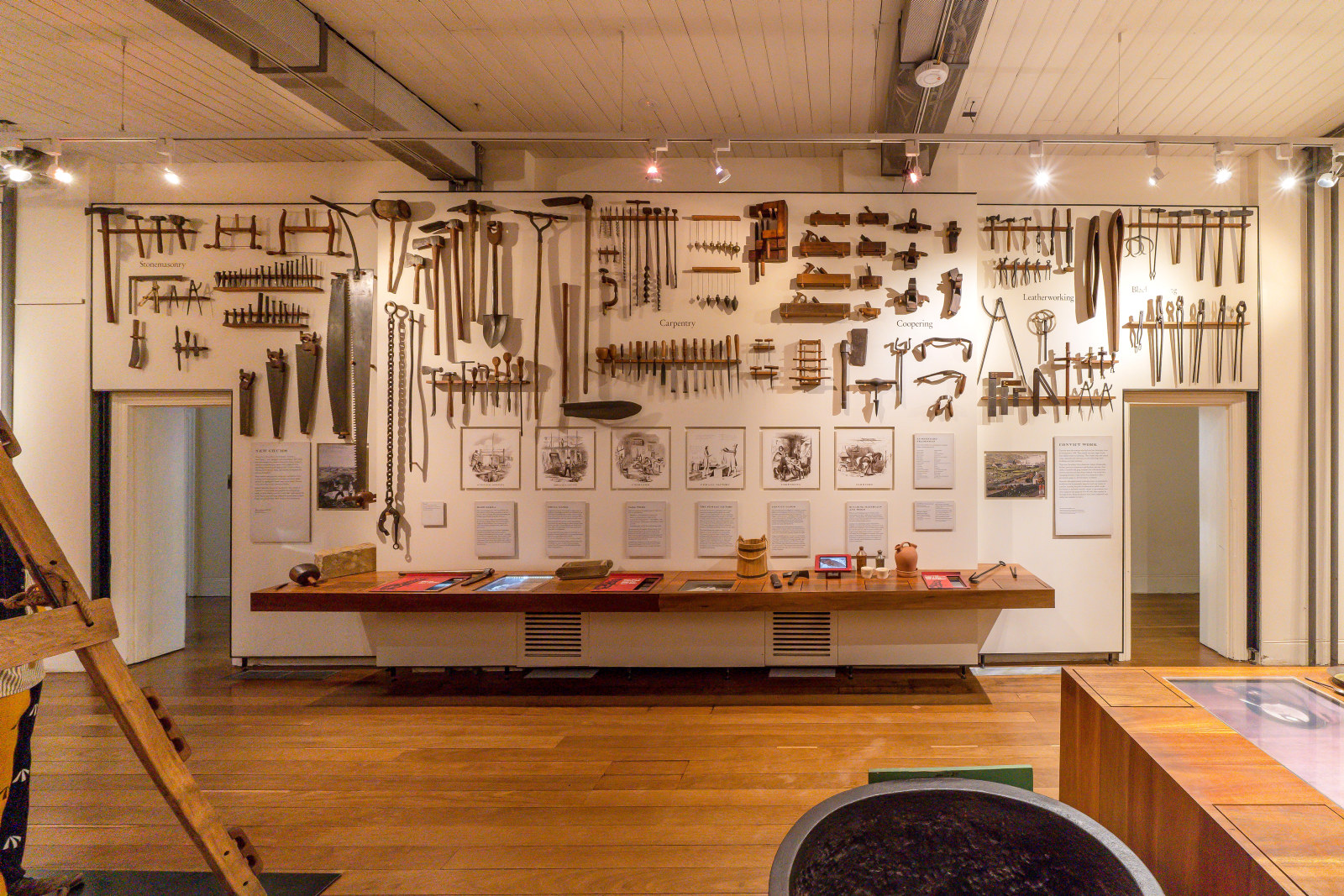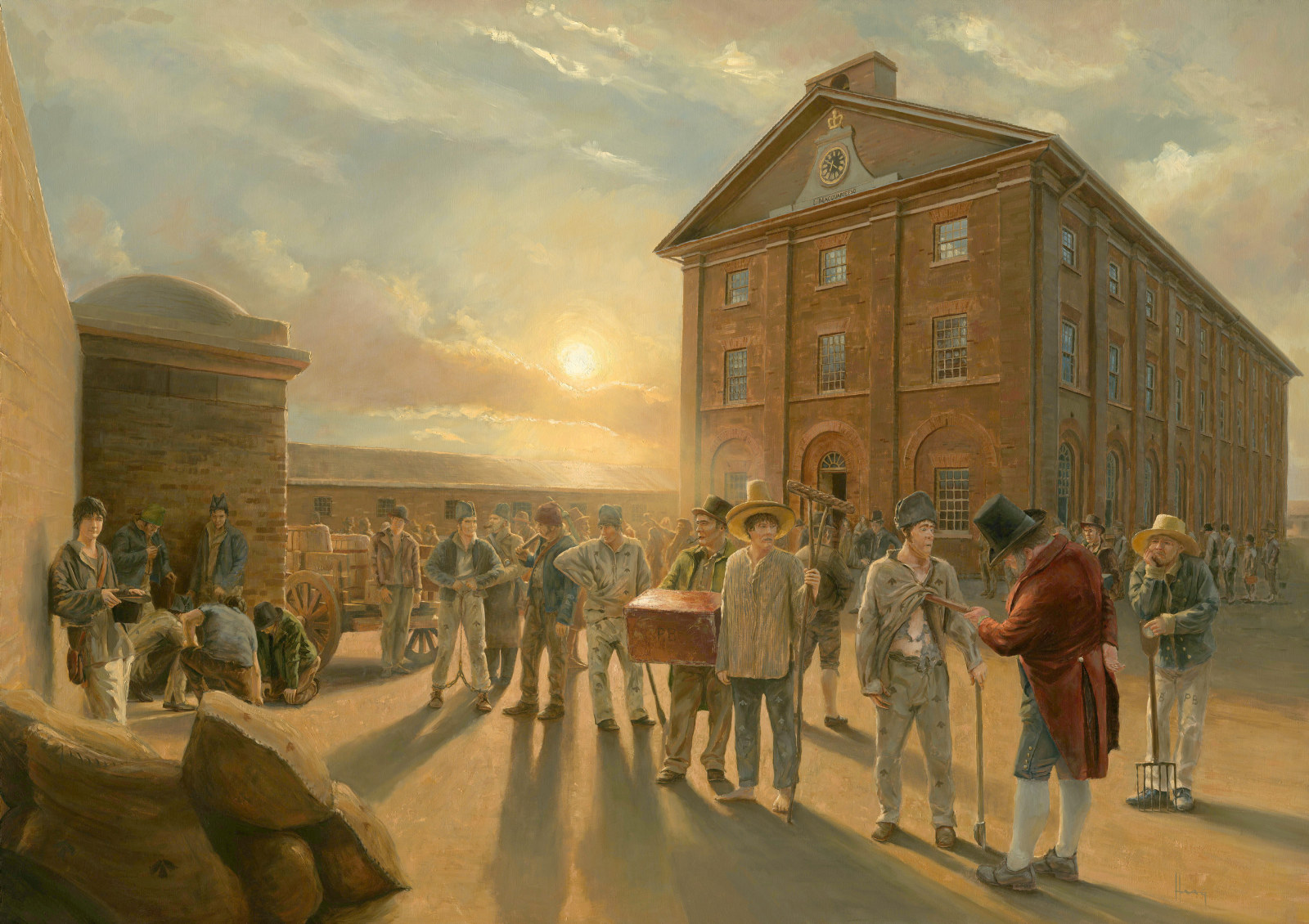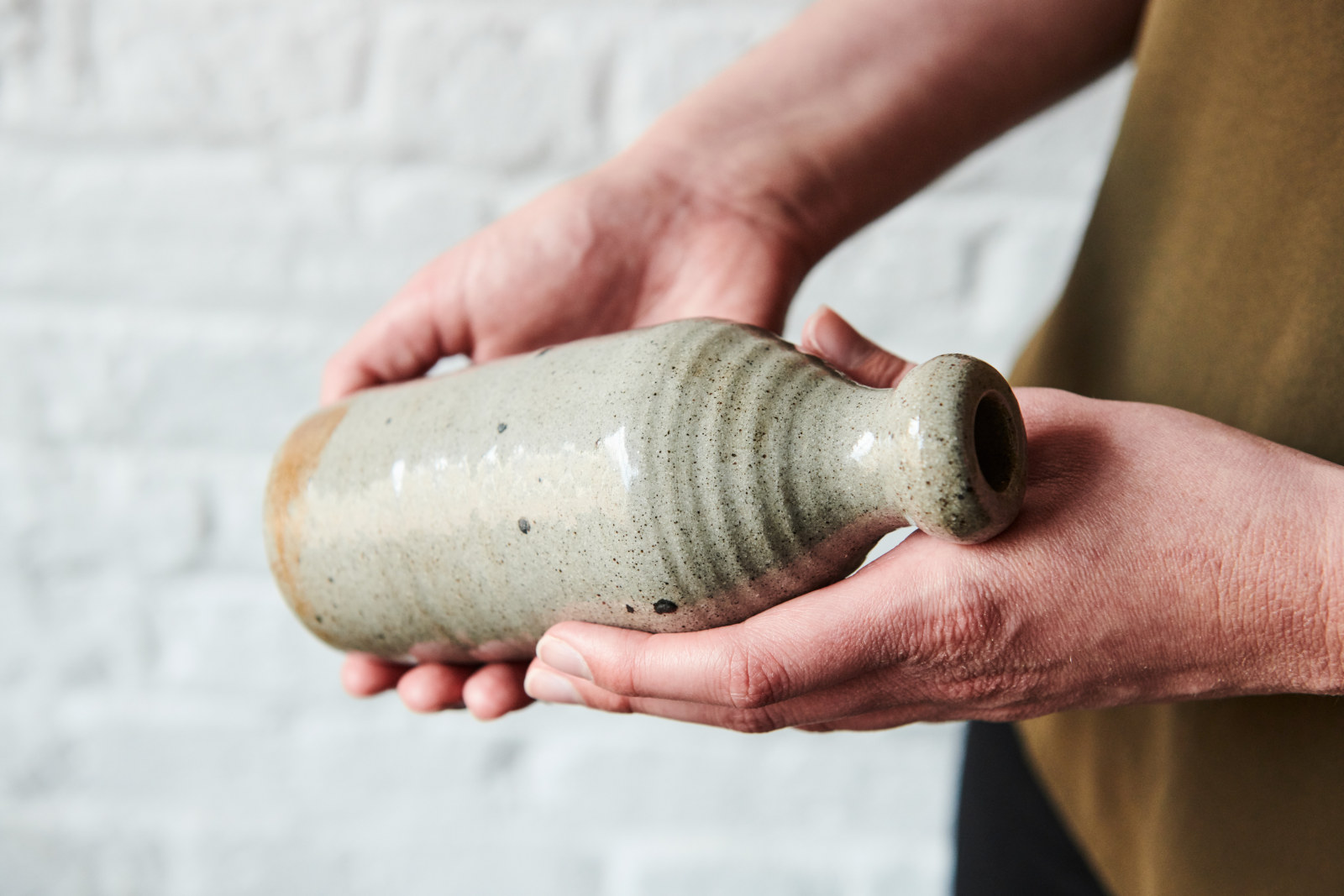Earthenware Vessel
Attributed to convict potter Thomas Ball, c1801–1823
Excavated by archaeologists from the Rum Hospital south wing, this lead-glazed earthenware vessel probably once contained medicines or ointments for treating convict patients. It is thought to have been made by convict potter Thomas Ball, who ran a pottery at the Brickfields (now Haymarket) between 1801 and 1823. Ball’s trademark lead-glazed earthenware vessels like this one, are among the earliest ceramics made in Australia.
Born in Staffordshire, where much of England’s pottery was manufactured, Ball was transported in 1799 on the Hillsborough with a seven year sentence for highway robbery. Upon arrival in Sydney, Ball may have been put to work making bricks, and by 1801-2 he had selected land in the Brickfields where he established the first pottery business in the colony. By 1804 Ball had served out his sentence and was free to work for himself, and later reported that he ‘has had those premises twenty two years and has always had uncommon encouragement from every Governor during that period’. In 1827, years after he made this vessel, Ball fell ill and died, aged 42, at the Rum Hospital.
Published on
Related

Convict Sydney
Objects
These convict-era objects and archaeological artefacts found at Hyde Park Barracks and The Mint (Rum Hospital) are among the rarest and most personal artefacts to have survived from Australia’s early convict period

Convict Sydney
Convict Sydney
From a struggling convict encampment to a thriving Pacific seaport, a city takes shape.

Learning resources
Explore our range of online resources designed by teachers to support student learning in the classroom or at home